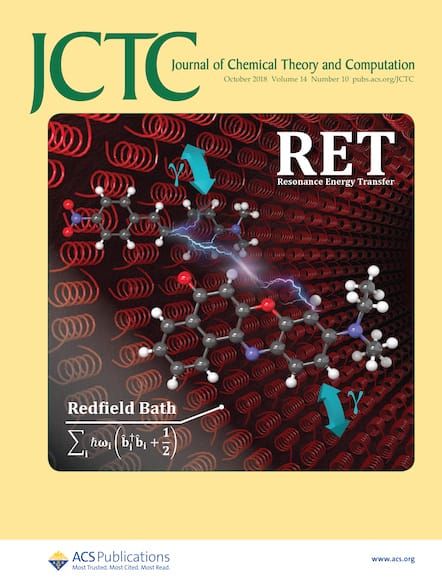Unitary Block-Correlated Coupled Cluster Ansatz Based on the Generalized Valence Bond Wave Function for Quantum Simulation.
IF 5.7
1区 化学
Q2 CHEMISTRY, PHYSICAL
引用次数: 0
Abstract
Strongly correlated (SC) systems present significant challenges for classical quantum chemistry methods. Quantum computing, particularly the variational quantum eigensolver (VQE), offers a promising framework to address these challenges by inherently supporting exponentially large configuration spaces. However, its application to SC systems remains limited due to the single-reference nature of the widely used ansatzes such as unitary coupled cluster (UCC). To address this challenge, we propose the generalized valence bond-based unitary block correlated coupled cluster (GVB-UBCCC) method. This novel ansatz incorporates the multiconfigurational nature of generalized valence bond (GVB) and the accuracy of block correlated coupled cluster (BCCC) methods, making it well-suited for SC systems. We have implemented the GVB-UBCCC method with up to two-block correlation (GVB-UBCCC2) and applied it to investigate ground-state energies for several SC systems, including H4, the water dimer, N2H2, and S6, at most described by 24 qubits. Our approach demonstrates that for these systems, GVB-UBCCC2 can achieve more accurate ground-state energies than UCCSD in most cases while requiring only O(N2) quantum gates and parameters, as opposed to the O(N4) scaling of UCCSD. The results highlight the effectiveness and potential advantages of GVB-UBCCC in SC systems.基于广义价键波函数的量子模拟酉块相关耦合簇Ansatz。
强相关体系对经典量子化学方法提出了重大挑战。量子计算,特别是变分量子特征求解器(VQE),提供了一个有前途的框架,通过内在地支持指数级大的配置空间来解决这些挑战。然而,由于广泛使用的分析方法(如单一耦合簇(UCC))的单参考性质,其在SC系统中的应用仍然有限。为了解决这一挑战,我们提出了基于广义价键的酉块相关耦合簇(GVB-UBCCC)方法。这种新方法结合了广义价键(GVB)的多构型特性和块相关耦合簇(BCCC)方法的准确性,使其非常适合于SC系统。我们已经实现了GVB-UBCCC方法,具有高达两块相关(GVB-UBCCC2),并将其应用于研究几种SC系统的基态能量,包括H4,水二聚体,N2H2和S6,最多由24个量子位描述。我们的方法表明,对于这些系统,GVB-UBCCC2在大多数情况下可以比UCCSD获得更精确的基态能量,而只需要O(N2)量子门和参数,而不是UCCSD的O(N4)缩放。结果突出了GVB-UBCCC在SC系统中的有效性和潜在优势。
本文章由计算机程序翻译,如有差异,请以英文原文为准。
求助全文
约1分钟内获得全文
求助全文
来源期刊

Journal of Chemical Theory and Computation
化学-物理:原子、分子和化学物理
CiteScore
9.90
自引率
16.40%
发文量
568
审稿时长
1 months
期刊介绍:
The Journal of Chemical Theory and Computation invites new and original contributions with the understanding that, if accepted, they will not be published elsewhere. Papers reporting new theories, methodology, and/or important applications in quantum electronic structure, molecular dynamics, and statistical mechanics are appropriate for submission to this Journal. Specific topics include advances in or applications of ab initio quantum mechanics, density functional theory, design and properties of new materials, surface science, Monte Carlo simulations, solvation models, QM/MM calculations, biomolecular structure prediction, and molecular dynamics in the broadest sense including gas-phase dynamics, ab initio dynamics, biomolecular dynamics, and protein folding. The Journal does not consider papers that are straightforward applications of known methods including DFT and molecular dynamics. The Journal favors submissions that include advances in theory or methodology with applications to compelling problems.
 求助内容:
求助内容: 应助结果提醒方式:
应助结果提醒方式:


